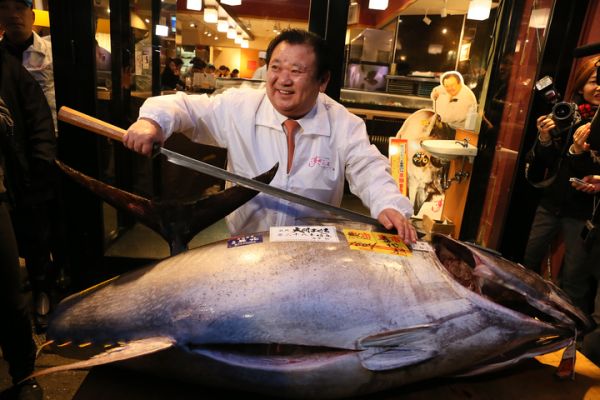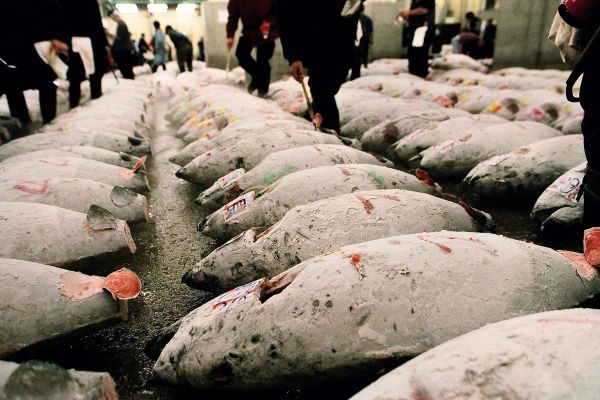
Last week, a restaurant owner in Japan spent $117,000 on one single 441-pound Bluefin tuna. First of all, $117,000 is an insane amount of money to spend on anything. But also, that fish was bigger than two Marshawn Lynches! (We judge everything big by the Marshawn Lynch scale around here.)
The purchase was made at the legendary Tsukiji market in Tokyo, where the year’s first auction generates unthinkable prices with hopes of ushering in a bountiful year. (Just like the prosperity gospel!)
The buyer, Kiyoshi Kimura, previously paid almost $1.8 million for a 490-pound tuna after a bidding war with a competing restaurant. According to Kimura, after the 2016 purchase, “everyone in the auction was deeply moved.”
While the notion of a single fish valued at $265 per pound may be entertaining, it’s also concerning. Bluefin tuna are an endangered species whose stock in the Northern Pacific Ocean has seen a decline of more the 96%. Conservationists worry about rising prices at auction because as the cost of Bluefin increases, so will fishermen’s motivation. As Amanda Nickson of the Pew Environmental Group puts it, “It’s a highly valuable natural commodity and people naturally want to fish something that gives them such a high return.”

Rows of Tuna at the Tsukiji Fish Market
Worse still is the fact that more than 90% of species recently caught were too young to have reproduced, which means they could effectively be the last generation of Bluefin tuna. With few regulations protecting the species from overfishing and no concern for the fish’s reproductive stages, it’s possible Bluefin will soon be functionally extinct. Headline-grabbing prices for the fish certainly play into that.
The fact that Bluefin tastes great — it’s rich, fatty, and has a perfect texture — is certainly driving this extinction forward, too. “Bluefin tuna belly is one of the most delicious things in the world,” Bruce Mattel, associate dean of food production at the Culinary Institute of America, told NPR last year. Which means getting people to change habits will surely be an uphill struggle.
What’s a diner to do? The Monterrey Bay Aquarium’s Seafood Watch List Sushi Tool is a great place to look at the environmental impact of different purchasing choices. Needless to say, purchasing a six-figure Bluefin at a Japanese auction isn’t recommended.






